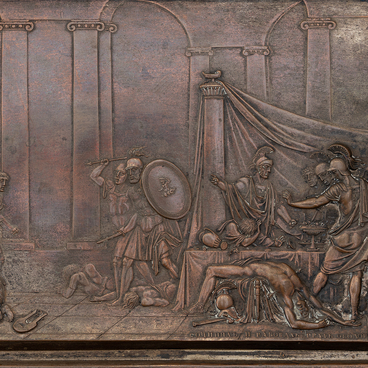Alexander Semyonovich Yegornov was a painter and watercolorist. He studied at the Saint Petersburg Academy of Arts under Mikhail Konstantinovich Klodt. In 1887, he received a small gold medal for his landscape named “A Watermill”. He took trips abroad that were sponsored by the Academy of Arts. Yegornov was a full member and exhibitor of the Society of Russian Watercolorists and a full member of the Saint Petersburg Society of Artists. His works are kept in the State Tretyakov Gallery, the State Russian Museum and other collections.
Yegornov developed his style in the direction of Realistic landscape that was part of academic Russian painting. In his works, he focused on depicting the peculiarities of Russian nature, its beauty and national identity.
Yegornov studied at the Academy of Arts and was mentored by Mikhail Klodt, a member of the Peredvizhniki group of artists, who in turn had been mentored by the Romantic painter Maxim Nikiforovich Vorobyov. This can explain the fact that Yegornov’s works combined the genre and landscape approach to nature, which corresponded to the basic principles of the Peredvizhniki painting in the 1870s, with somewhat romantic features.
Yegornov painted the landscape “A Watermill” in 1887 while still a student at the Imperial Academy of Arts. In 1888, this work was displayed at an exhibition organized by the Academy.
The format of the painting is determined by the artist’s creative approach to creating a comprehensive view and a large well-arranged space with the use of the laws of perspective. Yegornov resembles his mentor in his choice of a simple motif as a basis for a poetically meaningful, idyllic and elevated landscape.
The slightly elevated horizon line and the horizontal format of the painting are perfect for depicting a wide space with a detailed foreground, motionless tree crowns and a water wheel in the middle ground and the background, vanishing in the light haze of the horizon.
The composition and color structure of the landscape are balanced and harmonious. The palette of the painting is dominated by the classical three-color scheme, ranging from the dark brown of the foreground to the cold blue of the background.



